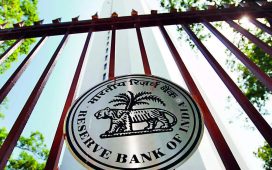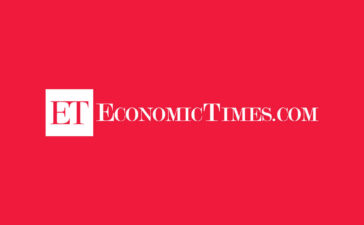
Furthermore, Hypertension (HTN) exerts a substantial strain on India’s public healthcare systems and cardiovascular health status in India, with HTN being directly responsible for 57% of all stroke deaths and 24% of all coronary heart disease (CHD) deaths in India.
To address the urgent need to spread awareness and take affirmative action, The Economic Times, in collaboration with USV, brings a special World Hypertension Day episode titled ‘The Brain, The Heart, and The Kidney: The Trifecta of Hypertension’, featuring a panel of esteemed experts, Dr. Ajit Mehta, Dr Soumik Chaudhuri and Dr. Basavaraj G S in conversation with moderator Mayuri Dongre. Dr. Ajit Mehta is the Director of Cardiology at Jehangir Nursing Home, Pune, Dr Soumik Chaudhuri is the Clinical Lead and Consultant at the Department of Cardiology, Peerless Hospitex Hospital and Research Centre Ltd., Kolkata, and Dr. Basavaraj G S is the Senior Consultant Endocrinologist at Narayana Health City, Bommasandra, Bengaluru.
Webinar series with experts on hypertension
World Hypertension Day: Identifying risks, monitoring high BP, and adopting preventive measures to address this silent killer To address the ticking bomb called hypertension, commonly referred to as high blood pressure, The Economic Times, in collaboration with USV, brings a special World Hypertension Day episode titled ‘The Brain, The Heart, and The Kidney: The Trifecta of Hypertension’, featuring a panel of esteemed experts, Dr. Ajit Mehta, Dr. Soumik Chaudhuri and Dr. Basavaraj G S. This significant discussion aimed to address the critical connection between hypertension and our vital organs. Here are the highlights.
Hypertension and the potential risk of organ damage
High blood pressure has become endemic in India, affecting about one in four individuals, and leading to target organ damage. Dr. Ajay Mehta delved into the subject, setting to explain the complex interplay of the brain, the heart, and the kidneys in regulating blood pressure and why it’s crucial to maintain a healthy blood pressure level.
Dr. Mehta elaborated that blood pressure doesn’t exist in silo; maintaining normal blood pressure in an individual involves an intricate interplay among the central nervous system, the cardiovascular system, and the kidneys. First, it’s essential to understand the heart’s role: it is to pump blood to maintain normal circulation. The kidneys, on the other hand, regulate fluid and electrolytes. The brain monitors vasoconstriction or vasodilatation of arteries, affecting blood pressure. Any disruption in this regulation can lead to high or low blood pressure, impacting various organs. Hypertension is often a “silent killer”, leading to severe complications such as stroke, heart disease, kidney failure, and hypertensive retinopathy. Therefore, everyone must monitor their blood pressure regularly and take necessary precautions, stressed Dr. Mehta.
The causes and risk factors of hypertension
Next, Dr. Soumik Chaudhary explained the causes and risk factors for high BP impacting the vital organs.
Whether you’re going to get hypertension or not is probably determined right at the time you’re born. Genetic factors often determine whether you’ll be hypertensive later. However, there are ways that you could worsen it for yourself, such as a lack of physical activity, leading a sedentary lifestyle, and so on.
Dr. Chaudhary cited the instance of the Covid-19 pandemic as adversely impacting several sections of the population who started working from home, leading to a vacuum in physical activities. This contributed significantly to an already explosive trajectory of cardiac diseases, hypertension, and diabetes. Second, Dr. Chaudhary dived into the paradigm of diet, especially the spectrum of high-sodium, low-fruits, and low-vegetables diets as worsening the chances of an individual getting hypertension.
Third, several hormonal factors or “endocrine disorders” could increase an individual’s chances of getting hypertension; and so are pheochromocytomas (a tumour in the adrenal gland), and Cushing syndrome where some hormones are in excess in the body. This could also trigger hypertension.
Age and elderly age, genetic factors, poor lifestyle choices, and a poor diet make it much more probable that you’ll probably end up with hypertension. Taking care of these factors could be preventable measures, highlighted Dr. Chaudhary.
Air pollution and hypertension
Apart from genetic factors and lifestyle choices, there’s also a correlation between pollution and high blood pressure.
Dr. Basavaraj G S talked about air pollution—a mixture of various substances—when these particulate matters are less than 2.5 microns they pose a grave threat to the human body. It adversely impacts individuals not only in terms of cardiovascular health, but impacting the lungs, leading to cancer, skin diseases, and so on.
He elaborated that the hypothesis is that it affects what I just mentioned, that there’s a lot of interplay between the autonomic nervous system, sympathetic and parasympathetic nervous system, which regulates blood pressure.
Dr. Basavaraj G S decoded endothelial dysfunction, explaining that the fine cell lining in blood vessels regulates blood pressure by releasing nitric oxide in the body, causing vasodilatation. When the patient is exposed to this toxic element particulate matter for a long time, it causes endothelial dysfunction. Additionally, pro-inflammatory enzymes are released in the body, leading to harmful effects on the blood vessels causing a spike in the blood pressure.
In the USA, UK, and parts of India, particularly in highly polluted areas like Delhi, studies found an increase in hypertension incidence by about three to eleven percent among individuals who were not previously hypertensive.
Dr. Basavaraj cautioned that this is likely just the tip of the iceberg, suggesting that we have yet to fully grasp the extensive impact of air pollution on human health. This situation presents a grim picture of our current state and underscores the need for greater awareness and proactive measures to address the effects of air pollution.
India’s young and hypertension: Why we must address the vicious cycle of metabolic syndrome
Dr. Basavaraj shared his insights into the reality that while a fifth of the world’s youth population is from India, it also projects an increased incidence of hypertension, especially in the young. What important steps can young individuals take to monitor their blood pressure and maintain their cardiovascular health?
He explained that India takes a lot of pride in being one of the youngest populations in the world. However, what we must also understand is that this younger generation is at risk of hypertension, high blood pressure, high sugar levels, obesity, and so many other conditions falling under the umbrella of metabolic syndrome. If India’s younger generation faces health issues and our healthcare costs rise, ultimately reducing the quality and quantity of life, then the pursuit of being a youthful population loses its real-world significance, explained Dr. Basavaraj.
Onto the second part of your question regarding preventive strategies, Dr. Basavaraj pointed out that this is something we may have overlooked and it’s reflected in our current health status. ICMR data indicates that the onset of diabetes in younger ages has shifted by almost five years; initially thought to occur around 40, it’s now occurring as early as 35. Seconding his co-panellists, Dr. Basavaraj emphasised that lifestyle modifications form the core of preventive measures.
What are lifestyle modifications?
Lifestyle modifications encompass everything related to your diet—cutting down on sodium intake, reducing carb consumption for people with diabetes, avoiding processed foods, soft drinks, junk food, and high-carb snacks. Having a healthy diet is the foundation.
Additionally, regular exercise is crucial. Aim for 30 to 40 minutes of intense exercises on most days of the week, if not daily.
On the front of behaviour modifications, quitting smoking is non-negotiable, especially for those with hypertension, diabetes, or a strong family history of heart disease. Moderate alcohol consumption is also important.
Moreover, managing stress is vital, considering the demands of the new startup culture and corporate environments. While it’s impossible to eliminate stress, it’s essential to find ways to manage it effectively—whether through exercise, yoga, meditation, or engaging in recreational activities. All of these elements, in the right proportions, form the basis of preventive strategies we recommend to our patients, shared Dr. Basavaraj.
Speaking on the warning signs or symptoms that indicate the effect of high blood pressure on the brain, heart, and kidneys, Dr. Mehta elucidated that there are no warning signs or symptoms of high blood pressure, and that’s why it’s also known as a silent killer. He stressed that one has to be vigilant and, beyond the age of 18, at least, if there is no strong family history, one should do a BP recording once every two years. If it is normal and beyond the 40s, even if the BP has been normal, one should do a BP recording once a year, at least if there is no family history or the BP and the first reading is normal.
He elaborated that ideally, there are no signs and symptoms of high blood pressure, but there could be a few signs. Feeling tired at the end of the day is one. Patients with high BP may get headaches, feel dizzy sometimes, or experience excessive lethargy. These signs are not very categorical but can hint at high blood pressure. Sometimes patients may feel breathless on exertion while walking, indicating long-standing hypertension.
Signs and symptoms related to the heart usually appear late. Signs like the heart muscle’s hypertrophy can be seen on ECG or echocardiography. For the kidneys, signs of long-standing hypertension may include some form of kidney injury. In the eyes, retinopathy may occur, and in the brain, clogging of the arteries supplying the brain may be observed, along with similar issues in the coronary arteries. However, these signs and symptoms appear very late in the disease onset. Waiting for them to be picked up means it’s already too late. Hence, regular blood pressure checkups are crucial because high blood pressure is known to be a silent killer.
White coat hypertension versus persistent high blood pressure
Dr. Chaudhary expressed his reservations against the term “white coat hypertension”. He explained that none of the three doctors on this panel was wearing a white coat. So these days, doctors don’t tend to wear them much. Hence, the term needs to be changed although it is a reality.
He further elaborated saying that most patients nowadays are quite well-educated. They read up. They look up. “So they will come and tell us, ‘Doctor, when I come to your chamber, I have high BP. When I’m at home,’ a lot of them have BP machines at home, ‘they’re like, my BP is quite fine.’ Now, you understand it causes a bit of a dilemma for me. Do I treat? Do I not treat? So white coat hypertension effectively refers to that. A patient or a person having high BP when they come to a doctor’s chamber, but not having high BP when outside it. There’s something exactly the opposite of that as well. That’s called masked hypertension. Here, they have normal BP when they come to a doctor, but they have high BP at home,” explained Dr. Chaudhary.
There are two effective ways of diagnosing this: HBPM and ABPM. Now, HBPM stands for home-based BP monitoring wherein an individual checks their BP at home, monitors it, makes a chart, and sends it to the doctor. It’s mandatory for all hypertensive patients, especially when Dr. Chaudhary sees them first or changes their medications. He asks such patients to send him a chart of 15 days as he wants to see what their BP is outside my chamber.
ABPM stands for Ambulatory BP Monitoring, wherein a patient wears a cuff over 24 hours, and the cuff records their BP, while the patient continues to pursue their normal physical activities. The doctor studies the recording and assesses the BP readings and their fluctuations. “We’ve had patients who’ve had BP readings of 140, 150, 90 BP in our hospital, in our chambers but the ABPM showed that they are consistently 170 or normal when they go to their houses,” illustrated Dr. Chaudhary.
To manage a patient with white coat hypertension, first, reassure them that they are in a safe place and there’s no need for anxiety. Creating a calm environment is crucial; ensure the setting is quiet and free from distractions or disturbances. These simple steps can significantly help in managing white coat hypertension effectively.
Early medical intervention and preventive measures
Early diagnosis and effective management of hypertension and diabetes are crucial due to their frequent coexistence. Dr. Basavaraj highlighted that diabetes is increasingly being detected in younger patients, necessitating the identification of high-risk individuals early on. This early detection is essential because of the concept of “diabetes legacy,” which indicates that well-controlled blood sugar levels in the initial years significantly benefit long-term health.
Effective early detection tools include the ADA risk screening questionnaires and Indian-specific tools like the Bharat Risk Code for Dysglycemia (BRS) and the Indian Diabetes Risk Score (IDRS). These tools help identify high-risk individuals who can then undergo further testing.
Sustainable lifestyle shifts
Effective management of hypertension and diabetes often starts with preventive measures. If blood sugar, blood pressure, and cholesterol levels are not critically high, sustainable lifestyle changes may be sufficient, potentially avoiding the need for medication. Key recommendations include maintaining a healthy diet, engaging in regular physical activities, and monitoring health indicators.
Importance of regular medical checkups
Regular medical checkups are crucial for early detection of diabetes, hypertension, and related organ damage. Early diagnosis allows for timely interventions, preventing the progression of these conditions. Dr. Chaudhary emphasised the “butterfly effect,” where small early actions can lead to significant long-term health benefits. Screenings can identify risk factors and early signs of organ damage, such as changes in heart function, which can be addressed before they lead to more severe health issues.
Role of lifestyle in managing obesity and metabolic syndrome
Obesity, particularly prevalent among Indians due to genetic and lifestyle factors, contributes to worsening metabolic conditions. Dr. Basavaraj pointed out that despite appearing thin, many Indians have high levels of visceral fat, leading to the early onset of diabetes and cardiovascular events. Effective management includes:
- Regular Physical Activity: Activities such as brisk walking, cycling, yoga, or any form of exercise for at least 30 minutes a day.
- Dietary Changes: Adopting a balanced diet low in processed foods and high in nutrients.
- Awareness and Prioritisation: Understanding the importance of health and making it a priority can combat sedentary habits.
Practical tips for incorporating physical activity
For those with busy schedules, integrating physical activity into daily routines can be effective. Suggestions include:
- Taking meetings while walking or standing.
- Using a pedometer to track steps, aiming for 4,000 to 8,000 steps daily to maintain weight and 8,000 to 10,000 steps to lose weight.
- Finding opportunities to move more, such as taking stairs instead of elevators or walking during phone calls.
By focusing on these preventive measures, regular checkups, and lifestyle modifications, individuals can effectively manage and mitigate the impacts of hypertension and diabetes, leading to better health outcomes and enhanced quality of life.
The discussion covered the significance of medication adherence in managing hypertension and diabetes. Patients often overlook the importance of taking prescribed medications regularly, which can lead to uncontrolled conditions and organ damage. Strategies such as fixed-dose combinations and honest communication about potential health risks are crucial in promoting adherence. Prioritising health, sustainable lifestyle changes, and moderation in diet and stress management were emphasised for maintaining overall well-being. Effective communication with healthcare providers involves prioritising health, making sustainable lifestyle changes, and finding balance amidst daily stressors.
Dr. Mehta emphasised the crucial role of lifestyle modifications in managing hypertension and diabetes, underscoring their significance alongside medication. He stressed the importance of dietary changes, such as following the DASH diet, and avoiding high-salt foods. Dr. Mehta suggests simple yet impactful measures like home blood pressure monitoring and occasional “cheat meals” to maintain patient engagement and motivation. Overall, he highlighted the need for patient education and proactive self-care to achieve optimal blood pressure control.
Webinar series with experts on hypertension
World Hypertension Day: Identifying risks, monitoring high BP, and adopting preventive measures to address this silent killer To address the ticking bomb called hypertension, commonly referred to as high blood pressure, The Economic Times, in collaboration with USV, brings a special World Hypertension Day episode titled ‘The Brain, The Heart, and The Kidney: The Trifecta of Hypertension’, featuring a panel of esteemed experts, Dr. Ajit Mehta, Dr. Soumik Chaudhuri and Dr. Basavaraj G S. This significant discussion aimed to address the critical connection between hypertension and our vital organs. Here are the highlights.










